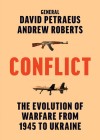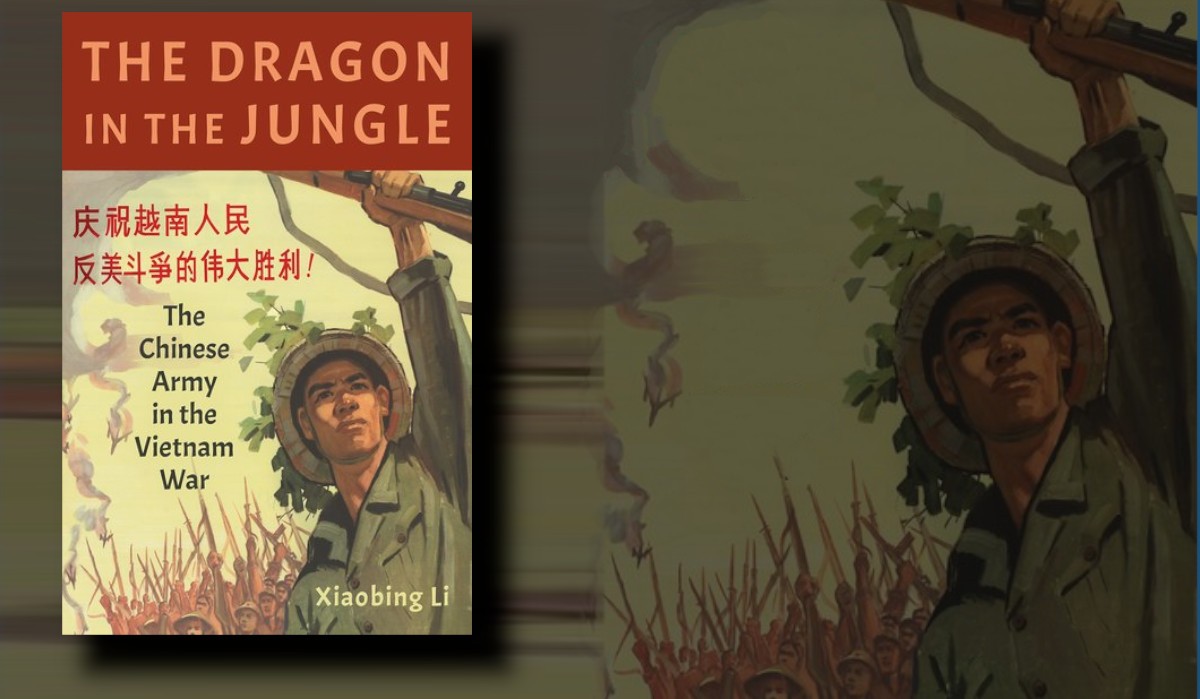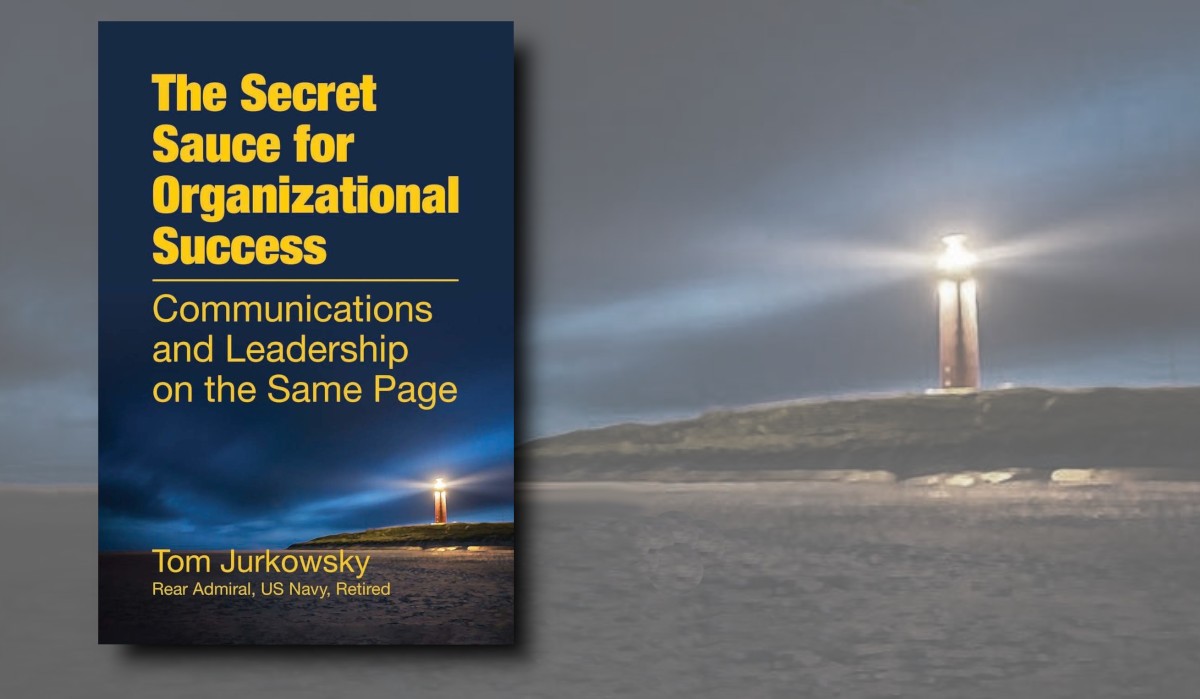The Evolution of Warfare from 1945 to Ukraine
by David Petraeus and Andrew Roberts
Harper Collins, London, 2023, 444 pp
ISBN 9780008567972
Reviewed By: Adriaan van Staden
Conflict: The Evolution of Warfare from 1945 to Ukraine is an expansive analysis of the evolution of global warfare since the end of World War Two. It delves into how conflicts, both large and small, have been transformed due to political, technological, and societal shifts, moving from state-on-state battles to asymmetric and hybrid warfare. The authors are well known figures. General David Petraeus (rtd.) is a former director of the Central Intelligence Agency, and noted for his military commands in Iraq, and Afghanistan, the latter as Commander International Security and Assistance Force. Andrew Roberts is a prolific historian, perhaps best known for his biographies of Winston Churchill and Napoleon Bonaparte.[1]
The book is divided into four parts, each of which analyses a distinct time period. The first part, ‘Post-WWII and the Cold War Era (1945-1991)’, as the title suggests, begins by examining the immediate aftermath of World War Two. Petraeus and Roberts argue that the introduction of nuclear weapons, the capability of which was so forcefully articulated in the 1945 bombings of Hiroshima and Nagasaki, profoundly changed the nature of global conflict. What came to be described as the doctrine of Mutually Assured Destruction (MAD), became a cornerstone of international relations during the Cold War. The global superpowers, the United States of America (USA) and the Union of Soviet Socialist Republics (USSR) spent enormous amounts of money and effort to amass massive nuclear arsenals. Yet the threat of total annihilation simultaneously acted as a deterrent to direct conflict, rendering warfare more complex both theoretically and practically. States and statesmen now had to seek and maintain a delicate balance of power, utilising tools such as diplomacy, espionage, and psychological warfare to prevent or limit escalation.[2] This situation was further complicated, as Petraeus and Roberts argue, by a further post-war trend – decolonisation. After achieving independence, a series of new states in Asia, Africa, and the Middle East became embroiled in violent struggles for power, and many of these conflicts took the form of guerrilla warfare.[3] Insurgency tactics, first popularised by groups like the Viet Cong in Vietnam, became a common method of resistance against conventional military forces.[4] Although Cold War superpowers frequently intervened in these conflicts by providing weapons and support to either communist or capitalist factions, the doctrine of MAD meant that neither side, thankfully, came into direct conflict.
Part II of Conflict delves into the rise of technological warfare following the collapse of the USSR, and therefore it focuses on the period 1991-2010. As the Cold-War era bipolar world was replaced by a unipolar world order led by the USA, western militaries sought to harness rapid technological advancements to underpin their strategies.[5] The Gulf War (1990–91) provided a clear demonstration of the effectiveness of high-tech warfare by the USA and its allies, characterised by what Petraeus and Roberts describe as precision-oriented, network-centric operations utilising precision-guided munitions, real-time intelligence, and integrated command systems.[6] However, the limitations of this approach became evident in the subsequent Global War on Terror.[7] The wars in Afghanistan (2001) and Iraq (2003) highlighted the complexities of fighting insurgencies and the limits of conventional military power in countering non-state actors. The USA and its allies focused heavily on counterinsurgency (COIN) strategies, combining military force with efforts to rebuild infrastructure, establish governance, and win the support of local populations to the western-backed governments established in Baghdad and Kabul. However, these campaigns revealed the challenges entailed nation-building such as the complexities of rebuilding political institutions,[8] addressing cultural divisions,[9] and establishing effective governance in post-conflict societies.[10]
The third part of the book delves into the most recent developments in modern warfare, emphasising the increasing complexity of conflicts and the blending of conventional and unconventional tactics. In the mid-2010s, the concept of ‘hybrid warfare’ gained international focus and attention. A blending of traditional military operations with cyberattacks, disinformation campaigns, and irregular forces, this form of war was exemplified in the 2014 Russian invasion of the Crimea and its support to the pro-Russian separatists in eastern Ukraine. ‘Little green men’ (unmarked soldiers) were used in conjunction with propaganda and cyber-attacks to destabilise a region or area without triggering a formal declaration of war. This method of warfare provided a nearby state with an opportunity to ‘intervene’ and achieve political objectives while maintaining a level of plausible deniability.[11] The authors also suggest that, in an increasingly interconnected world, cyber warfare has emerged as a critical domain of conflict. States and non-state actors now use cyberattacks to disrupt infrastructure, steal sensitive information, and manipulate public opinion (2016 USA elections). Cyber warfare, when paired with information warfare, is also illustrated as a potent mix, especially its potential to undermine trust in institutions and to destabilise societies. Closer to the battlefield, the proliferation of uncrewed aerial vehicles (UAVs) in ongoing conflicts across the globe has become exceedingly evident.[12] UAVs provide states with further reach, and the ability to conduct precision strikes or to conduct reconnaissance without risking the lives of their own soldiers.[13] Autonomous weapons and AI-driven warfare are also on the rise. Petraeus and Roberts view AI in warfare as an inevitable and transformative force, offering unmatched speed, resilience, and operational capabilities, but raising significant ethical and strategic risks.[14] They emphasise the dangers of catastrophic miscalculations when autonomous systems operate without human oversight, alongside the moral compromises involved in deploying such technology. Despite these concerns, AI dominance is seen as a crucial determinant of global power, with nations prioritising its development over ethical constraints.
The book concludes in Part IV with speculation on the future trajectory of warfare, based on the authors’ analysis of observable trends in global conflict and technology. Petraeus and Roberts suggest that AI is a particular area of interest and that it will play an increasingly central role in future conflicts.[15] From predictive analytics in logistics and strategy, to fully autonomous weapon systems, AI has the potential to change the dynamics of war.[16] However, AI also raises ethical questions about the role of humans in combat and the potential dangers of machines making autonomous decisions on the battlefield.[17]
Within this work, Petraeus and Roberts provide a comprehensive and insightful analysis of the evolution of warfare over the past eight decades. From the nuclear brinkmanship of the Cold War to the cyber and hybrid warfare seen in Ukraine, the book explores how conflict has adapted to the changing global landscape. It highlights the persistent nature of human conflict, and in reading it I was reminded of an important passage from the author Max Boot; “[t]hose who imagine that long running conflicts – say, over Kashmir or Palestine – can be resolved neatly and expeditiously through negotiations ignore the lessons of the Anglo-Scottish wars: conflicts of blood and soil, fought as a series of skirmishes between guerillas and regulars, can drag on for centuries even among peoples far closer in religion and outlook than the Indians and Pakistanis or the Israelis and Palestinians”[18].
Conflict: The Evolution of Warfare from 1945 to Ukraine broadly focuses on conventional warfare which may limit its appeal to those seeking in-depth analysis of less conventional warfare. For instance, the book appears to underemphasise certain styles of conflict, such as Maoist political warfare and revolutionary insurgencies. It is, however, a good resource for junior officers and non-commissioned officers (NCOs). The key developments in hybrid warfare outlined by Petreaus and Roberts, especially those emerging from Ukraine, provide valuable insights into how junior officers and NCOs must adapt to the operational environment of the future.
Endnotes
[1] Andrew Roberts, Napoleon The Great (London: Penguin, 2015); Andrew Roberts, Churchill: Walking with Destiny (London, Penguin, 2019).
[2] David Petraeus and Andrew Roberts, Conflict: The Evolution of Warfare from 1945 to Ukraine (London: HarperCollins, 2023), 6-9.
[3] Petraeus and Roberts, Conflict, 37-38.
[4] Ibid.
[5] Petraeus and Roberts, Conflict, 207.
[6] Petraeus and Roberts, Conflict, 197-198.
[7] Petraeus and Roberts, Conflict, 202.
[8] Petraeus and Roberts, Conflict, 244 – 245, 262.
[9] Petraeus and Roberts, Conflict, 248 – 249.
[10] Ibid.
[11] Petraeus and Roberts, Conflict, 351 - 356
[12] Petraeus and Roberts, Conflict, 373 – 374
[13] Ibid.
[14] Petraeus and Roberts, Conflict, 412-419
[15] Ibid.
[16] Ibid.
[17] See for example Shaughnessey, I. (2024) The Ethics of Robots in war?, Army University Press. Available at: https://www.armyupress.army.mil/Journals/NCO-Journal/Archives/2024/Febr…; (Accessed: 06 November 2024); and Klaus, M. (2024) Transcending weapon systems: the ethical challenges of AI in military decision support systems, Humanitarian Law and Policy Blog. Available at: https://blogs.icrc.org/law-and-policy/2024/09/24/transcending-weapon-systems-the-ethical-challenges-of-ai-in-military-decision-support-systems/; (Accessed: 06 November 2024).
[18] Max Boot, Invisible armies : an epic history of guerrilla warfare from ancient times to the present (New York: Liveright Publishing Corporation, 2014), 50.



